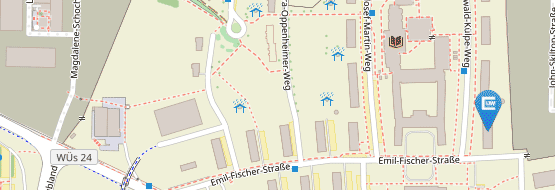PsyErgo auf der Conference on Intelligent User Interfaces
23.04.2021IUI ist eine jährlich stattfindende ACM Konferenz, welche die Forschungsfelder Human-Computer Interaction (HCI) und Artificial Intelligence (AI) vereint. Die Single-Stream Konferenz bot 5 Tage lang eine Plattform für Workshops, Tutorials, Präsentationen und Diskussionen über neue Themen aus HCI, AI sowie angrenzenden Feldern.
Die IUI2021 wurde von der Texas A&M University organisiert und fand dieses Jahr virtuell statt - vor allem auf den Plattformen Whova, Gathertown und in Zoom. Ein neuartiges Konzept auf der Konferenz selbst war das „Talk to a Famous Person“ Format, bei dem man in sich in Zoom auf ein fünfminütiges Vieraugengespräch mit Keynotespeakern treffen konnte. Bereits im Review Prozess wurden erstmalig auf der IUI durch sogenannte „shepherded papers“ Manuskripte bis zur Publikation begleitet, die Reviewern als spannend, aber noch nicht ganz ausgereift aufgefallen waren.
PsyErgo war mit einem Beitrag auf der Konferenz IUI2021 vertreten, der möglichen Nutzen und Akzeptanz von algorithmischer Unterstützung beim Erstellen von Affinity Diagrammen exploriert, wobei der zeitintensive Prozess unterstützt werden soll, ohne die „Brücke zum Design“ einzureißen. Stephan Huber präsentierte mit Parzival Borlinghaus (KIT) das Paper „Comparing Apples and Oranges: Human and Computer Clustered Affinity Diagrams Under the Microscope”.
Abstract
Affinity diagramming is a crucial yet time-consuming part of user research in human-centered design. In short, building affinity diagrams involves the hierarchical bottom-up clustering of user statements and observations, which later allow to derive insights and inspire design ideas. To support designers in this process, as a first contribution, we explored seven text-mining models for preclustering affinity notes and suggest fastText as most appropriate. Since affinity diagrams are not deterministic, there is no established measure to assess their quality. Our second contribution is, therefore, a thorough examination of the potential of fastText-clusters for design teams regarding technical, psychological and performance related measures. Compared to reference ‘human built’ affinity diagrams, the fastText-clusters resulted in an overlap index of M = .694(SD = .034). Surprisingly, a study with four design teams clustering small sets (112 notes) of pre-clustered or randomized affinity notes indicated an increased discussion overhead caused by algorithmic support that led to a decrease in both, efficiency and quality. As a third contribution, we report qualitative data from the instances, where algorithmic support failed designers’ expectations. We conclude that more research on the appropriate time and manner of pre-clustered data presentation is required to harness the full potential of algorithmic support while preserving the spirit of affinity diagramming.
Reference
Parzival Borlinghaus and Stephan Huber. 2021. Comparing Apples and Oranges: Human and Computer Clustered Affinity Diagrams Under the Microscope. In 26th International Conference on Intelligent User Interfaces (IUI ’21), April 14–17, 2021, College Station, TX, USA. ACM, New York, NY, USA, 10 pages. https://doi.org/10.1145/3397481.3450674
Zurück



